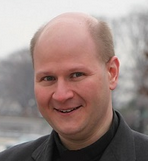
Income inequality has fallen in Canada, leading social scientists to concentrate on “wealth inequality.” A new report from Canada’s Fraser Institute finds that there’s a simple explanation why some segments of the population have accumulated more wealth than others.
The answer to the age-old question is old age. Simply put, wealth inequality comes about because older people have had more time to save, invest, and acquire financial assets.
The new report finds more evidence for the Life-Cycle Hypothesis. Young adults typically have low or negative net worth, as they borrow for college, start families, buy homes, and begin entry level jobs. As they age, and their skills increase, their paycheck goes up and their mortgage goes down. By the end of their career, they have reached the pinnacle of their working life – and their highest salary – paid off their mortgages, and put away substantial savings and investments for retirement.
“The Life-Cycle Hypothesis developed in the 1950s by Modigliani and Brumberg shows that income, consumption, saving, and wealth accumulation change with age because of the natural rhythms of education, work, marriage and family formation, pension saving, and retirement,” author Christopher Sarlo writes.
U.S. studies say the stage of life accounts for as much as 80 percent of differences in wealth. Sarlo, an economics professor at Nipissing University and a senior fellow at the Fraser Institute, says “the life-cycle effect in Canada likely accounts for between 80% and 87% of wealth inequality in 2012.”
Even the focus on wealth – real assets minus liabilities – is a shift for Canada’s economic interventionists. They typically protest “income inequality,” the difference in how much money people earn each year. But the Gini coefficient – the leading measure of income inequality – fell by 17 percent between 1970 and 2012 in Canada, according to the report. Thus, the new emphasis on overall wealth.
Since wealth inequality is a byproduct of life choices that change with the maturing needs of each individual, that means, to invert the phrase, the rich we have with us always. “Even if everyone was identical, there would be substantial wealth inequality because, at any point in time, we have people at different points in their life cycle,” Sarlo writes.
Using Canadian government data, Sarlo constructed a perfectly egalitarian society in which only age and life circumstances affected one’s overall share of wealth. The peak years for income would still fall between 56 and 65. And the top quintile would still own the majority (51 percent) of national wealth.
You can read the full Fraser Institute report, “Understanding Wealth Inequality in Canada” by Christopher A. Sarlo, here.
(Photo credit: Moyan Brenn. CC BY 2.0.)

